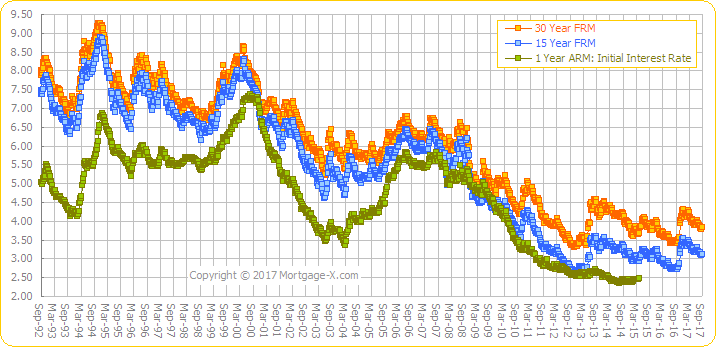It’s that time of the year again for the Greek Festival in Belmont.
Each Labor Day weekend the Greek Orthodox Church hosts its annual Greek Festival at the Church of the Holy Cross at the corner of Ralston Avenue and Alameda de las Pulgas. This year, the Greek Festival in Belmont will be held September 3th-5th 2011- Saturday, Sunday from 12:00 PM to 10:00 PM and Monday noon-8:00 PM . If you love to try great food and spirits you’ll be in heaven. The Greek Festival never disappoints when it comes to entertainment for the whole family.
As a supporter of the Greek Festival, we have complimentary tickets for you and your family. Simply use this form to request your tickets and we’ll get them to you A.S.A.P.

Here’s some more information on the event from their web site…
Find the meaning of kefi (joy) in this three-day true Greek extravaganza. The Belmont Greek Festival will feature delicious Greek meals and desserts, nonstop music and dancing, exciting exhibition folk dancing, choral folk singing, a captivating mythology play, a fun children’s amusement area, and children’s entertainer Andy Z.
Up to 20,000 people are expected to attend, festival organizers said. All guests will receive a special 40th Anniversary commemorative program book containing articles about Greek culture, recipes, Greek language phrases, information about the festival’s history and photos from past festivals.
“Greeks are famous for their hospitality,†said Festival Co-Chair Gary Brenner. “Our Belmont festival was the first Greek festival in Northern California, and we’re so proud to welcome guests of all ages to our 40th celebration weekend.
“It all starts with lots of fantastic, mouth-watering food and drink,†Brenner continued, “and it keeps on going with the fun and excitement of our dancing, music and theater. Before you know it, you’ll be shouting, ‘Opa!’ just like the Greeks.â€
Some of the favorite festival menu items will include souvlakia (Greek shish-kebab), barbecued lamb chops (with special Greek seasonings), spanakopita (spinach and cheese stuffed inside layers of filo pastry) and dolmades (grape leaves wrapped around ground beef and rice). Not forgetting the best Greek salad west of Athens, and roast lamb – the festival will feature 10 spit-roasted whole lambs turned for hours by hand before visitors’ eyes!
There will also be traditional homemade Greek pastries such as loukoumades (doughnut holes covered with honey), baklava (layers of nuts and filo pastry soaked in honey), kourambiedes (crescent-shaped butter cookies covered with powdered sugar) and galactobouriko (filo pastry filled with custard and covered with syrup).
Visit the taverna to sample Greek libations such as ouzo (anise-flavored aperitif), retsina wine and Metaxa brandy, and enjoy special wine tastings featuring Greek and American labels. Draft microbrewery beer and bottled Greek beer will also be offered to complement your meal, or just enjoy a glass sitting on the plaka (central plaza) while watching fellow visitors dance.
Cooking demonstrations will be offered daily – learn the secrets of Greek cooking and bring the benefits of a Mediterranean diet home!
Visitors also will enjoy continuous music from a live Greek band so they can dance the traditional kalamatiano, tsamiko, zeimbekiko and other Greek dances. The amazing “Sons of Ulysses†will dazzle the audience by lifting tables and chairs with nothing but their teeth!
In addition, several award-winning folk dance groups will perform throughout the weekend in their colorful, hand-made costumes. In an outdoor amphitheater reminiscent of the ancient theaters of Greece, children and adults alike will enjoy a special drama production featuring the heroes and villains of Greek mythology. The popular Festival Singers and Folk Ensemble will also perform Greek folk songs in the amphitheater.
Look for the Fun Zone children’s area in the shadow of the windmill, boasting games, rides, bouncy castles, crafts and more, just for young people. Don’t miss nationally-known children’s favorite Andy Z, a local singer-songwriter-guitarist who brings his award-winning show to the amphitheater on Saturday and Monday.
Tours of the award-winning Byzantine-style church, including the recently-installed mosaic iconography, will be given throughout the weekend, and the Holy Cross Church Liturgical Choir will sing during the church tour on Sunday at 2:00 PM.
Speak Greek? Visit the Greek Language School’s cultural booth, malista (yes)! Other festival highlights will include art, clothing, jewelry and gift boutiques, as well as religious icons and a bookstore.
The Church of the Holy Cross supports many charitable groups throughout San Mateo County, and each year, the church donates a portion of the festival proceeds to several local charities. Previous recipients of festival donations have included Samaritan House, Interfaith Network for Community Help (INCH), Children’s Advocacy Council, local schools and churches and the Belmont mayor’s choice of charity. In addition, Holy Cross Church sponsors several children from the Children’s Receiving Home of San Mateo County as special guests of the festival.
The hours of the Belmont Greek Festival are Saturday, September 4, and Sunday, September 5, from Noon to 10 PM, and on Monday, September 6, from Noon to 8 PM. The Fun Zone for children closes at 7:00 PM all three days. The Agora (our "White Elephant" room) closes at 6:00 PM all three days.
Admission is $5 for adults and $2.50 for seniors and youth ages 13-17. Children 12 and under are admitted free, accompanied by a parent or guardian.
For more information, explore their website further, or call (650) 591-4447. Yassou!
 According to Bankrate.com, mortgage interest rates have been attractive for such a long stretch of time that many homebuyers and homeowners might not realize that rates haven’t always been this low. Mortgage interest rates in the 4-percent range were unheard of until 2010, and rates in the 5-percent range were unknown prior to 2003, according to Bankrate.com surveys through the years and a chart of monthly average mortgage interest rates tracked by the Federal Reserve since 1971.
According to Bankrate.com, mortgage interest rates have been attractive for such a long stretch of time that many homebuyers and homeowners might not realize that rates haven’t always been this low. Mortgage interest rates in the 4-percent range were unheard of until 2010, and rates in the 5-percent range were unknown prior to 2003, according to Bankrate.com surveys through the years and a chart of monthly average mortgage interest rates tracked by the Federal Reserve since 1971.


 If a private insurance plan is unaffordable, don't give up. With the recession hitting California families hard, low-cost or no-cost insurance from Healthy Families and Medi-Cal keep millions of California kids healthy. Your child may qualify if your family income is up to roughly $46,000 annually (for a family of three – higher for larger families). For more information call 1-877-KIDS NOW or visit
If a private insurance plan is unaffordable, don't give up. With the recession hitting California families hard, low-cost or no-cost insurance from Healthy Families and Medi-Cal keep millions of California kids healthy. Your child may qualify if your family income is up to roughly $46,000 annually (for a family of three – higher for larger families). For more information call 1-877-KIDS NOW or visit